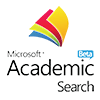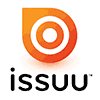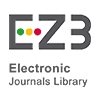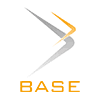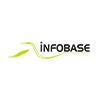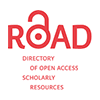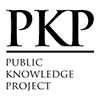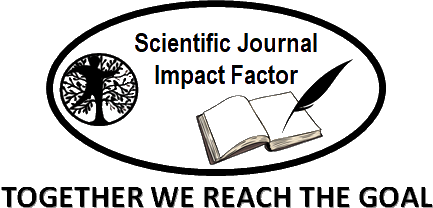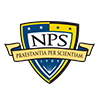Comparative Analysis of the Effects of High-Stakes English Exams on Students' Views of Teachers' Teaching Qualities
Abstract
High stakes exams might have an impact on test takers' learning objectives. It is unclear how the high-stakes English exams have affected students' evaluations of EFL teachers' teaching qualities, given their diverse academic backgrounds. Thus, the goal of this study was to bridge the knowledge gap by employing a mixed method of embedded research design and collecting data via questionnaire, Focused Group Discussion (FGD), and document analysis. The questionnaire was administered to a stratified random sample of 382, 12th grade students. The students with their one-semester academic achievements were selected from eight secondary schools (Arjo Gudetu, Biftu Gimbi, Biftu Nekemte, Darge, Gimbi, Guliso, Sena Gimbi and Sire) found in East and West Wollega zones, Oromia Regional State, Ethiopia. Data analysis involved descriptive statistics, multivariate and one-way ANOVA. The data gathered through document analysis and FGD were to substantiate the questionnaire. The contents of the five consecutive years of past Ethiopian Secondary School Leaving Certificate English Examination (ESSLCEE) questions were analyzed quantitatively. The qualitative method was used to conduct FGD with the selected student participants of different academic achievement levels from each school. The recorded data was subsequently transcribed, translated, analyzed, and discussed thematically. From the study, it is noteworthy that students with varying academic backgrounds exhibit washback variability. Although there are variations in mean scores between students with varying levels of academic achievement, these differences are not statistically significant when it comes to the students' perceptions of teachers’ teaching qualities. That is, the high-stakes ESSLCEE has a greater detrimental impact on the low-achieving groups than it does on the high-achieving ones.The findings imply that there are disparities in students' views about their EFL teachers teaching qualities because of the washback of the high-stakes English examination. The study's conclusions have led to the forwarding of recommendations, and the findings have implications for test takers, educators, testers, curriculum designers and policy makers in Ethiopia and elsewhere.
Keywords
Full Text:
PDFReferences
Alderson, J. C., & Wall, D. (1993). Does washback exist? Applied Linguistics, 14(2), 115-129.
Al-Hinai, M., & Al-Jardani, K. (2020). Washback in language testing: An exploration with a focus on a specific EFL context in Oman. International Journal of English Linguistics, 11(1), 68-75.
Bachman, L.F., & Palmer, A. (2010). Language assessment in practice: Developing language assessments and justifying their use in the real world. OUP.
Bailey, K. M. (1996). Working for washback: A review of the washback concept in language testing. Language testing, 13(3), 257-279.
Beikmahdavi, N. (2016). Washback in language testing: Review of related literature first. International Journal of Modern Language Teaching and Learning, 1(4), 130-136.
Brown, J. D., & Bailey, K. M. (2008). Language testing courses: What are they in 2007? Language Testing, 25(3), 349–383.
Bryman, A. (2008). Social Research Methods (4th ed.). OUP.
Buyukkeles, G. (2016). The Washback Effect of a High-Stakes Exit Test on Students’ Motivation in Turkish Pre-University EFL Preparatory School [Master’s thesis, University of Reading].
https://www.teachingenglish.org.uk/sites/teacheng/files/mda2017_university_of_reading_guliz_buyukkeles.pdf
Cheng, L. (2005). Changing language teaching through language testing: A Washback study. Cambridge: CUP.
Cheng, L. (2008). The key to success: English language testing in China. Language Testing, 25, 15-37.
Cheng, L., & Curtis, A. (2004). Washback or backwash: A review of the impact of testing on teaching and learning: Washback in language testing: Research contexts and methods. Lawrence Erlbaum Associates.
Creswell, J.W., & Creswell, J.D. (2018). Research Design: Qualitative, Quantitative, and Mixed Methods Approaches (5th ed.). Thousand Oaks: Sage.
David J. (2000). Handbook of Parametric and Nonparametric Statistical Procedures (2nd ed.). Chapman & Hall.
Degefu, D. (2017). The Washback Effect of Ethiopian General Secondary Education Certificate English Examination (Egsecee) On Students’ Learning Preference: The Case of Shirka Secondary School [Unpublished master’s thesis]. Adama Science and Technology University.
Dörnyei, Z. (2007). Research methods in applied linguistics: quantitative, qualitative, and mixed methodologies.Oxford University Press.
Friska, Y., & Setiawan, I. (20018). Students’ Perceptions towards National Examination: A Washback Study. Academic Journal PERSPECTIVE: Language, Education and Literature, 6 (2), 144-158.
Gashaw, T. (1982). The Measurement of English Language Proficiency of High School Graduates [Master’s thesis, Addis Ababa University]. AAU Institutional Repository. http://etd.aau.edu.et/handle/123456789/8747.
Gashaye, S (2021). The Washback of the Ethiopian National English Examination (ENEE) for Grade 10 on Students’ Practice: Debre Markos Secondary Schools on Focus. Theory and Practice in Language Studies, 11 (7), 780-787.
________ (2020). The Washback of English National Examination for Grades 9 and 10 on Teaching Practices in Ethiopia: A Case Study of Debre Markos Secondary Schools. International Journal of English Language and Literature Studies, 9 (2), 106-120.
Green, A. (2007). IELTS washback in context. Cambridge University Press.
Heaton, J. (1990). Classroom Testing. Longman.
Hopkins, K. D., Stanley, J. C., & Hopkins, B. R. (1990). Educational and psychological measurement and evaluation. Needham Heights, MA: Allyn & Bacon.
Hughes, A.(2003). Testing for Language Teachers (2nd Ed.). Cambridge University Press.
Islam, M.S., Hasan M.K., Sultana, S., Karim, A., & Rahman, M. M. (2021). English language assessment in Bangladesh today: principles, practices, and problem. Language Testing in Asia, 11(1), 2-21.
Leta, D. (1990). Achievement, Washback and Proficiency in School Leaving Examination: A Case of Innovation in an Ethiopian Setting [Unpublished doctoral dissertation]. University of Lancaster.
Manjarres, N. B. (2005). Washback of the foreign language test of the state examinations in Colombia: A case study. Arizona Working Papers in SLAT, 12(2005), 1-19.
McCombes, S. (2022). Descriptive Research Definition, Types, Methods & Examples. https://www.scribbr.com/methodology/descriptive-research/.
McNamara, T. (2000). Language Testing. Oxford: Oxford University Press.
Moore, D. S., Notz, W. I, & Flinger, M. A. (2013). The basic practice of statistics (6th ed.). W. H. Freeman and Company.
Nahdia, K., & Trisanti, N., (2019). Examining Washback of National Examination: EFL Teachers and Students’ Perceptions. Advances in Social Science, Education and Humanities Research, 188, 273-277.
Negede. D. (2002). An Investigation of the Washback Effect of the Ethiopian School Leaving Certificate (ESLEC) English Language Examination [Master’s thesis, Addis Ababa University]. AAU Institutional Repository.
http://etd.aau.edu.et/handle/123456789/28144
Oğuz, M. K., Demirogları,G. & Demirogları, B. (2020). Washback effect of higher education institution examforeign language test on university candidates’ attitudes. African Educational Research Journal, 8 (2), 121-130.
Owusu, S. (2021). Washback Effect of High-Stakes English Language Tests on the Learning Behaviours of Ghanaian ESL Learners. Journal of Education and Practice, 12(30), 79-101.
Pallant, J. (2020). SPSS survival manual - a step by step guide to data analysis using SPSS for windows (version 10) (7th ed.). Buckingham Open University Press. https://doi.org/10.4324/9781003117452.
Pan, Y. (2014). Learner Washback Variability in Standardized Exit Tests. The Electronic Journal for English as a Second Language: ESL-EJ, 18(2), 1-30.
Park, G-P, & Lee, H-W. (2006). The characteristics of effective English teachers as perceived by high school teachers and students in Korea. Asian Pacific Education Review, 7(2), 236-248.
Punch, K.F. (2005). Introduction to social research: quantitative and qualitative approaches (2nd ed.). Sage.
Rahman, Kh. A., Seraj, P.M.I, Hasan, Md. K., Namaziandost, E. & Tilwani, S.A. (2021). Washback of assessment on English teaching-learning practice at secondary schools. Language Testing in Asia, 11(12) 1-23.
Rea‐Dickins, P., & Scott, C. (2007). Washback from language tests on teaching, learning and policy: Evidence from diverse settings. Assessment in Education: Principles, Policy & Practice, 14(1), 1-7.
Resnick, L. B. & Schantz, F. (2017). Testing, teaching, learning: who is in charge? Assessment in Education: Principles, Policy & Practice, 24(3), 424-432.
Saif Sharzad (2006). Aiming for positive washback: a case study of international teaching assistants. Language Testing, 23 (1), 1-34.
Salehi, H., & Yunus, Md. (2012). The washback effect of the Iranian universities entrance exam: teachers’ insights. Jounal of Language Studies 12(2), 609-628.
Shih, C.-M. (2006). Perceptions of the General English Proficiency Test and its washback: A case study at the two Taiwan technological institutes [Doctoral dissertation, University of Toronto]. Tspace Repository. https://hdl.handle.net/1807/119345.
Spratt, M. (2005). Washback and the classroom: the implications for teaching and learning of studies of washback from exams. Language Teaching Research, 9(1), 5–29.
Stoneman, B. W. H. (2006). The impact of an exit English test on Hong Kong undergraduates: A study investigating the effects of test status on students’ test preparation behaviours [Doctoral dissertation, Hong Kong Polytechnic University]. Polyu Elctronic Theses Repository. https://theses.lib.polyu.edu.hk/handle/200/5489.
Tayeb, Y., Aziz, M.S.A., Ismail, K. & Khan, A. (2014). The Washback Effect of the General Secondary English Examination (GSEE) on Teaching and Learning. http://dx.doi.org/10.17576/GEMA-2014-1403-06.
Taylor, L. (2005). Washback and Impact. ELT Journal, 59(2), 154-155.
Tokunaga, H. (2018). Fundamental Statistics for the Social and Behavioral Sciences (2nd ed.). Sage.
Wichadee, S. (2010). Characteristics of Effective English Language Teachers: The perspectives of Bangkok University Students.
http://www.bu.ac.th/knowledgecenter/epaper/jan_june2010/pdf/Page_01.pdf.
Zurrahmi, U., & Triastuti, A. (2022). Indonesian EFL students’ perceptions of effective non-native English teachers. Studies in English Language and Education, 9(1), 299-317.
DOI: http://dx.doi.org/10.18415/ijmmu.v12i9.7040
Refbacks
- There are currently no refbacks.
Copyright (c) 2025 International Journal of Multicultural and Multireligious Understanding

This work is licensed under a Creative Commons Attribution-NonCommercial-NoDerivatives 4.0 International License.
https://ijmmu.com
editor@ijmmu.com
facebook.com/ijmmu
Copyright © 2014-2018 IJMMU. All rights reserved.









